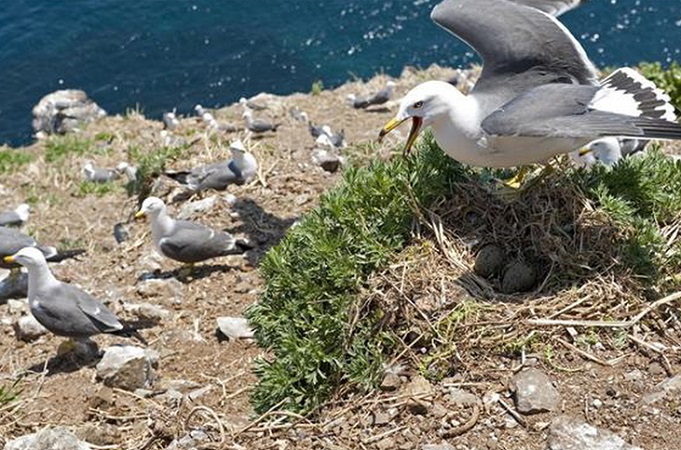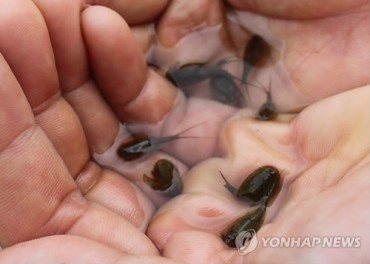
Black-tailed gulls on the South Korea’s easternmost islets of Dokdo is seen in this photo provide by the National Science Museum.
SEOUL, June 20 (Korea Bizwire) — The government plans to utilize information on the core habitats of seabirds when selecting locations for constructing offshore wind power plants.
According to a study conducted by the Korea Environment Institute and the National Institute of Ecology, the core habitat for black-tailed gulls covers an area of 15,981 square kilometers.
This determination resulted from tracking the movements of 166 gulls in 17 regions across the country using GPS devices from June 2021 to January of this year.
The core habitat comprises breeding grounds, feeding grounds, and connecting routes.
When including the country’s territorial sea and internal waters, the core habitat expands to 86,004 square kilometers, indicating that one-fifth of South Korean seas serve as a core habitat for black-tailed gulls.
The research team focused on black-tailed gulls as the dominant species in the region.
Sea birds engage in cooperative breeding with other species to defend themselves against predators.
Therefore, understanding the core habitat of the dominant species enables the research team to identify the core habitats of other species as well.
The research team will incorporate the GPS data collected until May before extracting the final results.
The research findings were utilized for the environmental impact assessment of a wind farm project on Anmado, an island off the coast of South Jeolla Province.
They will also contribute to generating reports on the environmental impact assessment of potential sites for wind turbine installation.
Moreover, the information about the core habitats of seabirds will assist fishermen in avoiding potential damages during the wind power plant construction process.
According to the International Union for Conservation of Nature (IUCN), areas with stronger winds support abundant fishery resources and a higher population of seabirds.
This suggests that a favorable location for building a wind power plant is also advantageous for fishing.
Lina Jang (linajang@koreabizwire.com)






